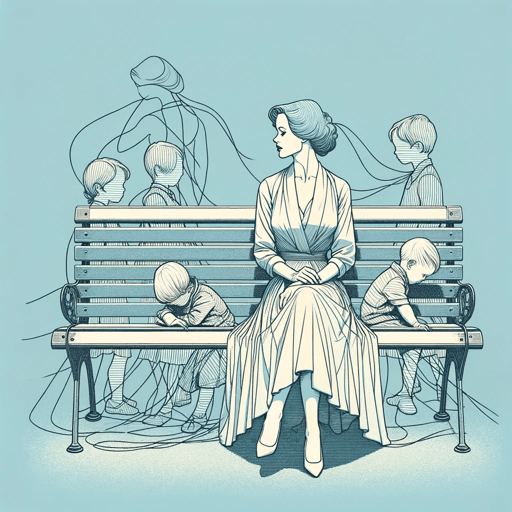19 pages • 38 minutes read
Gwen HarwoodIn The Park
Fiction | Poem | Adult | Published in 1961A modern alternative to SparkNotes and CliffsNotes, SuperSummary offers high-quality Study Guides with detailed chapter summaries and analysis of major themes, characters, and more.
Poem Analysis
Analysis: “In the Park”
Harwood’s three-stanza poem tells a specific, linear story, from a third-person perspective, of a woman in the park with her children. The first stanza gives readers a visual description of the scene. The language is immediately judgmental—a tone that continues throughout the poem, implying the disapproving gaze of passers-by and society in general. The poem appraises the woman’s clothes as "out of date" (Line 1)—she is unfashionable, suggesting that she does not have the time or money to keep her style current. The deeper implication, which will be made more explicit in the poem's last line, is that time has stopped for her as an aesthetic being—she wears the fashion of the time when she was still an unattached person interested in maintaining an attractive appearance. Now that she is primarily a mother, her selfhood—here in the form of outward self-expression—has been erased.
The second line describes the misbehavior of two of her children. Again, their—possibly valid or explicable—complaints are described with external judgment. Unlike ideal children, taught be seen and not heard, these "whine and bicker, tug her skirt" (Line 2). They are demanding attention, explaining why the woman no longer has the ability to spend time on herself.

